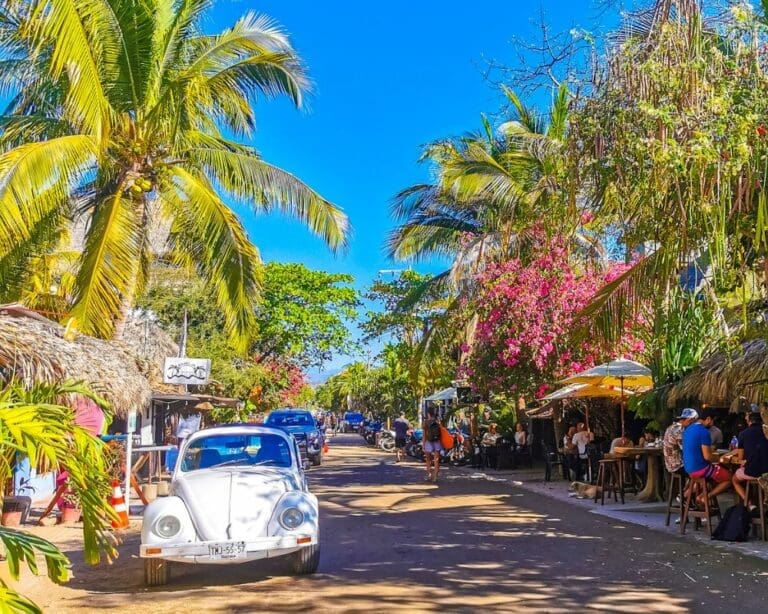Mexico Travel > Best time to visit Mexico
Best time to visit Mexico
Discover the best time to visit Mexico with our comprehensive guide, covering weather conditions, seasonal pricing, and popular events. Find the perfect balance between affordability and favorable weather for a memorable Mexican vacation.
Best time to visit Mexico: quick info
- Best months to visit Mexico for great weather: November to May
- High season in Mexico: November to May
- Low season in Mexico: June to October
- Rainy season in Mexico: July, August, and September
- Cheapest months to visit Mexico: July, August, and September
🙋 Questions about the best time to visit Mexico? Talk to a travel expert.

January in Mexico
January is considered one of the cooler months in Mexico, but this largely depends on the region. In the northern parts, temperatures can drop to around 5°C (41°F), while in the southern areas, such as the Yucatán Peninsula, average temperatures hover around 23°C (73°F).
Mexico City experiences milder temperatures in the highlands, averaging 12°C (54°F). Coastal areas, particularly those along the Pacific and Caribbean, are balmy, with averages around 28°C (82°F). Expect some rainfall, particularly in the tropical south, while the north remains relatively dry.
January isn’t typically considered a peak tourist season in Mexico, which can make it a more affordable time to visit. The cost of flights, accommodation, and activities may be lower than in busier months such as December or summer.
However, this can also depend on where you plan to visit Mexico. Resorts in popular coastal areas might still see higher prices due to the appealing winter sun. Booking in advance and comparing prices across different platforms is always advisable to get the best deal.
January is a vibrant month in Mexico, with numerous events and festivals. One of the most significant is the Day of the Three Kings (Día de los Reyes Magos) on January 6th, a religious holiday that marks the end of Christmas with gift-giving and the traditional “Rosca de Reyes” bread.
Other notable events include the Mérida International Arts Festival, a multi-week event in Yucatán featuring music, theatre, and dance performances from local and international artists. In Chiapas, the Fiesta Grande de Chiapa de Corzo is a colorful celebration with traditional parades, dances, and music that honor local patron saints.

February in Mexico
February in Mexico sees a gradual rise in temperature across the country, signalling the approach of spring. Northern regions can expect temperatures to increase to around 10°C (50°F), while the southern regions, including the Yucatán Peninsula, enjoy balmy averages of 25°C (77°F).
Mexico City’s highland climate offers milder weather, averaging 14°C (57°F). Coastal areas, like Cancún and Puerto Vallarta, remain warm and inviting, averaging 29°C (84°F). Rainfall is still minimal, particularly in the north, but the tropical south may experience occasional showers.
February can be a moderately priced month for travel in Mexico. While it is not the peak tourist season, Valentine’s Day and the US President’s Day weekend can lead to a slight price uptick due to increased demand, especially in popular resort areas.
However, the cost of flights, accommodations, and activities may still be lower than during the high seasons. Researching and booking in advance is recommended for the best deals.
February is an exciting time in Mexico, with various events and festivals occurring throughout the month. Constitution Day (Día de la Constitución) is a public holiday celebrated on the first Monday of February. The Zona MACO in Mexico City, one of Latin America’s most important contemporary art fairs, typically takes place in February, attracting art lovers worldwide.
The Festival de México, also in Mexico City, is a major cultural event featuring theatre, dance, music, and visual arts. In the coastal city of Mazatlán, the Carnaval de Mazatlán, one of the country’s biggest carnivals, brings an explosion of color, music, and dance to the streets.



March in Mexico
March heralds the arrival of spring in Mexico, with temperatures continuing to climb throughout the country. In the northern regions, average temperatures rise to about 15°C (59°F), while the southern areas, including the Yucatán Peninsula, experience averages of around 28°C (82°F).
In the central highlands, Mexico City enjoys pleasant weather with an average of 17°C (63°F). The coastal areas along Pacific and Caribbean coasts bask in warm temperatures averaging 30°C (86°F). Rainfall remains low, especially in the northern parts, while the tropical south may see sporadic showers.
March can be a slightly more expensive time to travel to Mexico due to spring break when many students from the United States visit popular coastal areas. This can lead to increased prices for flights and accommodations, particularly in resort destinations like Cancún and Puerto Vallarta.
However, areas not traditionally associated with spring break may offer reasonable prices. As always, booking well in advance and comparing prices is advisable to secure the best deals.
March is a lively month in Mexico, hosting several notable events and festivals. The Spring Equinox is celebrated across the country, but the festivities at the Mayan and Aztec ruins, such as Chichén Itzá and Teotihuacán, are particularly remarkable, attracting thousands of visitors who come to witness the impressive display of light and shadow on the ancient structures.
Additionally, the Festival Internacional de Cine en Guadalajara, one of Latin America’s most significant film festivals, is held in March. In Monterrey, the Pa’l Norte Music Festival brings a mix of rock, Latin, and electronic music, drawing a large crowd of music lovers.


April in Mexico
April is one of the warmest months in Mexico, with temperatures reaching their peak in most regions. In the north, the average temperature can reach 20°C (68°F), while in the south, including the Yucatán Peninsula, temperatures rise to around 30°C (86°F).
Mexico City, nestled in the highlands, experiences a mild average of 20°C (68°F). Temperatures remain balmy along the Pacific and Caribbean coastal areas, averaging 32°C (90°F). Rainfall is scarce across the country, particularly in the north, but the tropical south may experience occasional, brief showers.
April can be a moderately priced month to visit Mexico. The influx of spring break tourists usually decreases by this time, which can result in lower prices for flights and accommodations, especially in popular beach resort destinations.
However, Easter week, known as Semana Santa, is one of the most significant holiday periods in Mexico, and during this time, domestic tourism spikes, which can lead to increased prices. Booking in advance and comparing prices is advisable to secure good deals.
April in Mexico is filled with vibrant events and festivals. Semana Santa, or Holy Week, is a significant event featuring religious processions and reenactments of the Passion of Christ, especially in places like Taxco and Iztapalapa in Mexico City.
Another significant event is the Feria Nacional de San Marcos, one of Mexico’s largest fairs, held in Aguascalientes. It features music, dance, a rodeo, and a nationally recognized beauty pageant. The Riviera Maya Film Festival also typically takes place in April, showcasing international and Mexican films in the beautiful settings of Cancún and Playa del Carmen.


May in Mexico
May in Mexico is characterized by warm temperatures across the country, marking the end of the dry season and the beginning of the rainy season. In the north, the average temperature can rise to about 25°C (77°F), while in the south, including the Yucatán Peninsula, temperatures hover around 32°C (90°F).
In the highlands, Mexico City experiences temperatures averaging 22°C (72°F). Coastal areas along the Pacific and Caribbean maintain balmy temperatures, averaging 33°C (91°F). Rainfall increases, especially in the tropical south, while the north stays relatively dry.
May is generally not an expensive month to travel in Mexico. With the spring break and Easter holiday season over, prices for flights and accommodations tend to decrease, including in the popular beach resort areas.
However, the period around the Cinco de Mayo holiday can show a slight price uptick due to increased demand, especially in Puebla, where the historic event it commemorates took place. As always, booking in advance and shopping around for the best prices is advisable.
May brings a variety of events and festivals to Mexico. The most famous is Cinco de Mayo, celebrated with particular enthusiasm in Puebla, where the Battle of Puebla took place. The event features military parades, reenactments, and traditional music and dance.
The Festival Internacional del Cervantino Barroco in San Cristobal de las Casas is a significant cultural event showcasing Baroque music. In late May, the Feria de Nuestra Señora de la Salud takes place in Querétaro, offering a range of activities, including a large funfair, traditional dances, and local gastronomy.
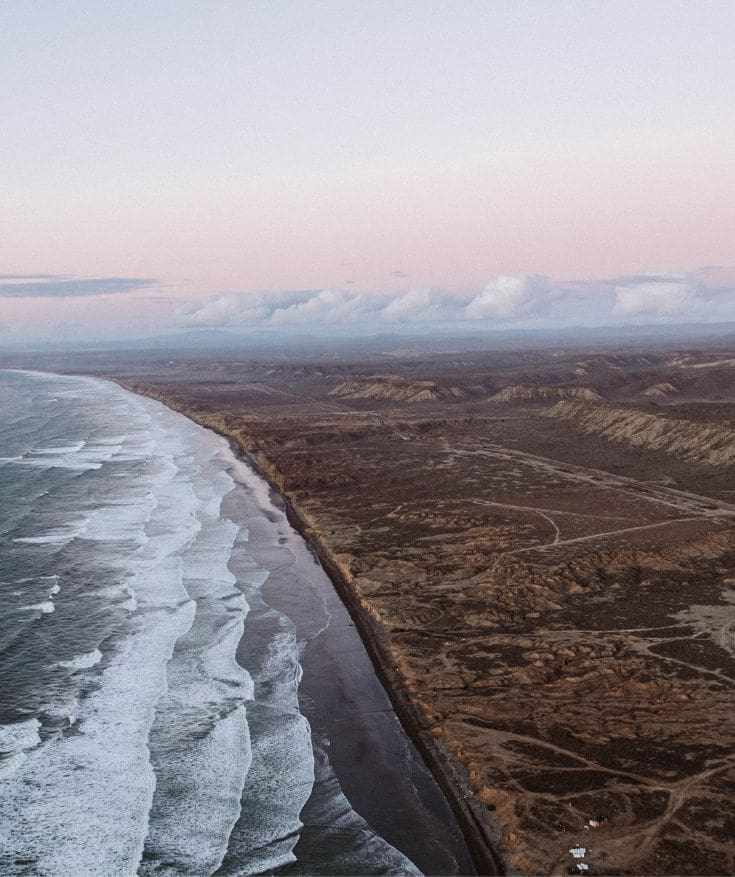

June in Mexico
June in Mexico marks the onset of the rainy season, although the overall weather varies depending on the region. In the north, temperatures remain warm with averages around 30°C (86°F), while in the south, including the Yucatán Peninsula, temperatures can reach up to 33°C (91°F). Mexico City, located in the central highlands, experiences mild temperatures, averaging around 22°C (72°F). Coastal areas along the Pacific and Caribbean continue to be warm, averaging 33°C (91°F). Rainfall increases, especially in the tropical south, but showers, often in the late afternoon or evening, are typically brief and followed by sunshine.
Paragraph 2: June is generally not a peak tourist season in Mexico, so travel and accommodation prices can be quite reasonable. The end of the school year in the U.S. can lead to a slight increase in family travel, but it’s usually not enough to significantly affect prices. However, as always, prices can vary depending on the specific location and event, so it’s recommended to book in advance and compare prices across different platforms.
Paragraph 3: June is a vibrant month in Mexico, hosting a variety of events and festivals. The Festival Internacional de Danza Contemporánea in San Luis Potosí features contemporary dance performances from national and international troupes. Guelaguetza in Oaxaca, although mainly celebrated in July, begins its festivities in the last weeks of June. It’s one of Mexico’s most colorful festivals, showcasing traditional music, dance, and costumes from the region. In Baja California, the Fiesta de la Música brings a mix of music genres to the streets of Tijuana, celebrating the summer solstice with free concerts across the city.
Plan your trip to Mexico with us!
We live here and have traveled the Baja California SUr state. Get in touch with us by sending a Whatsapp message to +52 473 171 5259 to get a quote. No hidden costs, just simple prices.


July in Mexico
July in Mexico is in the heart of the rainy season but also promises warm temperatures. In the north, average temperatures hover around 30°C (86°F), while in the south, including the Yucatán Peninsula, the mercury can climb to 33°C (91°F).
In the highlands, Mexico City maintains a pleasant average of around 22°C (72°F). Coastal regions along the Pacific and Caribbean are hot and humid, with norms of 34°C (93°F). Rainfall peaks during this time, especially in the tropical south, but showers are typically brief and often occur in the late afternoon or evening.
July can be a bit more expensive for travel in Mexico, as it corresponds with the summer vacation period in many countries, including the U.S., increasing tourism. Popular beach resort areas might see a rise in prices for flights and accommodations during this period. However, it’s worth noting that prices can vary significantly depending on the location and timing, so booking well in advance and comparing prices across different platforms is recommended.
July is a culturally vibrant month in Mexico, with various festivals and events. One of the most significant is the Guelaguetza Festival in Oaxaca, a celebration of indigenous cultures with traditional dances, music, and costumes. In Veracruz, the Afro-Caribbean Festival showcases the influence of African culture on the region, featuring music, dance, and cuisine.
The Riviera Maya hosts the Sacred Mayan Journey, a traditional canoe race that recreates ancient Mayan pilgrimage routes. The International Mariachi and Charreria Festival in Guadalajara also brings together the best mariachi bands and Mexican rodeo performers for a grand celebration.


August in Mexico
Warm temperatures and the continuation of the rainy season characterize August in Mexico. In the northern regions, average temperatures typically hover around 30°C (86°F), while the southern areas, including the Yucatán Peninsula, experience averages of about 33°C (91°F).
In the highlands, Mexico City maintains a pleasant average of around 22°C (72°F). Coastal areas along the Pacific and Caribbean continue to be hot and humid, averaging 34°C (93°F). Rainfall is still high, particularly in the tropical south, with showers usually in the late afternoon or evening.
August can be a moderately priced month for travel to Mexico. While it is still the summer vacation period in many countries, it is not considered peak season, and you can expect a slight decrease in prices for flights and accommodations compared to July. However, prices can vary depending on the location and specific events.
August hosts a range of vibrant events and festivals in Mexico. The annual Mezcal Fair takes place in Oaxaca, showcasing this traditional Mexican spirit with tastings, workshops, and cultural events. The Indigenous Cultural Festival in Baja, California, celebrates the region’s native cultures with traditional music, dance, and crafts.
In the Yucatán Peninsula, the feast of the Talking Cross in Felipe Carrillo Puerto commemorates a significant historical event with religious ceremonies, traditional dances, and bullfights. The International Chamber Music Festival in San Miguel de Allende brings together musicians from around the world for concerts in various venues throughout the city.


September in Mexico
September in Mexico sees the continuation of the rainy season and the beginning of a slight temperature drop. In the north, average temperatures generally hover around 25°C (77°F), while the south, including the Yucatán Peninsula, experiences averages of around 31°C (88°F).
Mexico City enjoys milder temperatures in the highlands, with an average of 20°C (68°F). While still warm, coastal regions along the Pacific and Caribbean see standards of 32°C (90°F). Rainfall remains significant, particularly in the south, but showers are often brief and typically occur in the late afternoon or evening.
September is generally not a peak tourist season in Mexico and can be a more affordable time to visit. The end of summer vacations in the U.S. and Canada often leads to decreased tourism, resulting in lower prices for flights and accommodations, even in popular beach resort areas. However, prices may increase slightly around the Independence Day celebrations. As always, booking in advance and comparing prices across various platforms is recommended to get the best deals.
September is a significant month in Mexico, featuring one of the country’s most important holidays: Independence Day, or “El Grito,” celebrated on September 16th. Cities and towns across the country come alive with parades, fireworks, music, and food, with the most significant celebration in Mexico City’s Zócalo.
The Fiestas de Septiembre in Tijuana is a month-long celebration featuring music, dance, and gastronomy. At the same time, the International Mariachi Festival in Guadalajara showcases traditional Mexican music with performances by mariachi bands from all over the world.
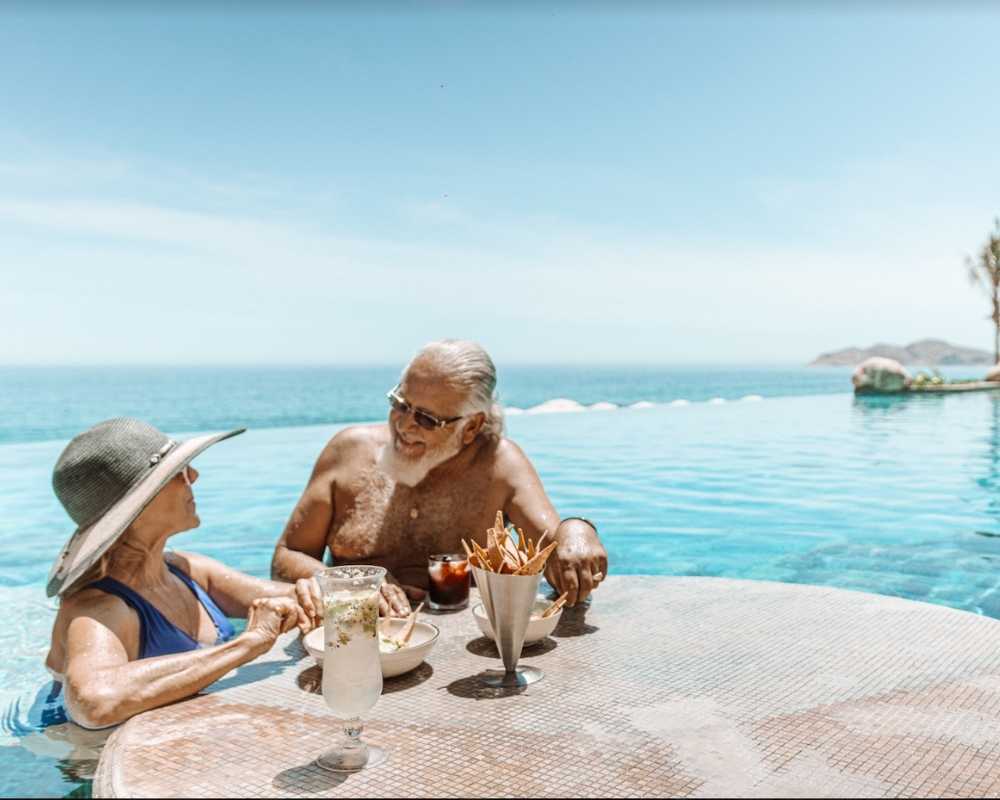

October in Mexico
October in Mexico signals the end of the rainy season and the beginning of cooler temperatures, especially toward the end of the month. In the northern regions, temperatures average around 20°C (68°F), while in the south, including the Yucatán Peninsula, temperatures hover around 29°C (84°F).
In the highlands, Mexico City experiences milder weather with an average of 18°C (64°F). Coastal regions along the Pacific and Caribbean remain warm, with standards of 31°C (88°F). Rainfall decreases significantly across the country, making way for clearer skies.
October can be a reasonably priced month to visit Mexico. With the summer vacation season over and before the holiday rush, prices for flights and accommodations tend to decrease, including in popular beach resort areas. However, prices may increase slightly around the time of the Day of the Dead celebrations.
October in Mexico is filled with notable events and festivals, with the Day of the Dead preparations being the most prominent towards the end of the month. The Cervantino Festival in Guanajuato, one of Latin America’s most important artistic and cultural events, takes place in October, showcasing theater, music, dance, and visual arts.
The International Balloon Festival in León features hundreds of hot air balloons taking to the skies in a vibrant display. In the Yucatán Peninsula, the Festival de las Ánimas, or Festival of Souls, is a unique local celebration paying homage to the departed with processions, altars, and traditional music and dance.
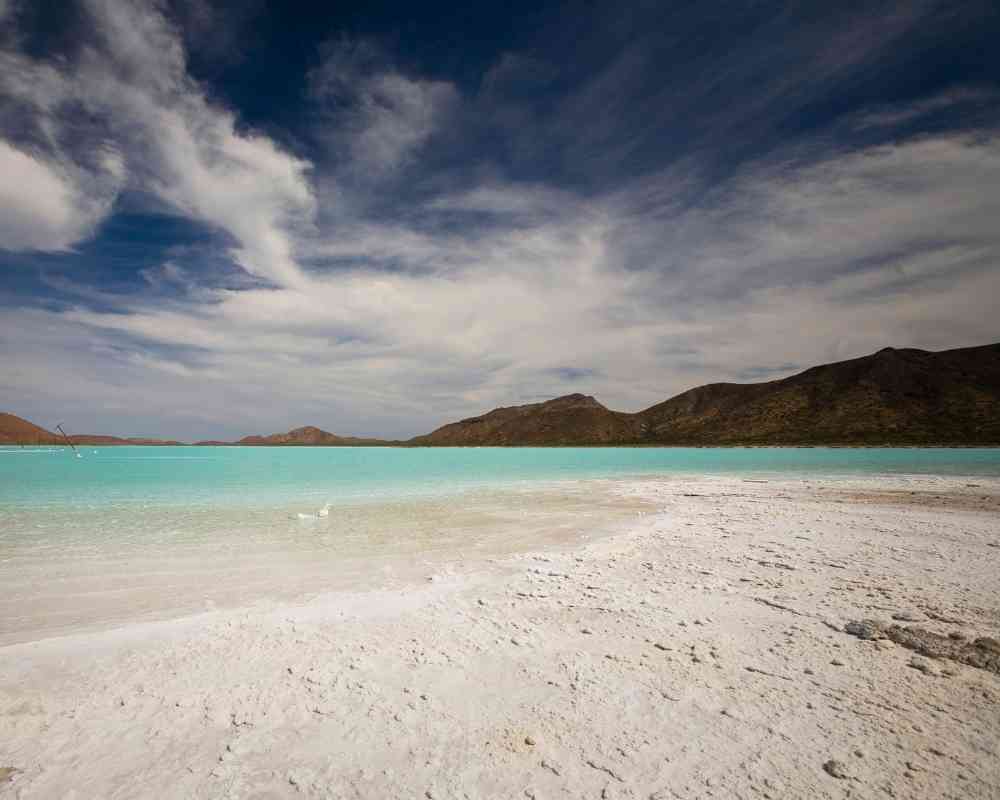

November in Mexico
November in Mexico welcomes the dry season, with significantly less rainfall and increasingly cooler temperatures. In the northern regions, average temperatures cool to around 15°C (59°F), while in the south, including the Yucatán Peninsula, temperatures hover around 27°C (81°F).
Mexico City, nestled in the highlands, experiences milder weather with an average of 16°C (61°F). Coastal regions along the Pacific and Caribbean are warm but more moderate, with averages of 29°C (84°F). This month marks a shift to clearer skies and more pleasant weather nationwide.
November can be a cheap month to visit Mexico. The period between the end of the summer rush and the start of the December holiday season often sees a decrease in tourism, leading to lower prices for flights and accommodations, including in popular beach resort areas. However, during the Day of the Dead celebrations, the first few days of the month may show a slight price increase.
November is culturally vibrant in Mexico, with several significant events and festivals. The most prominent is the Day of the Dead, celebrated from October 31st to November 2nd, a deeply traditional holiday honoring the deceased with altars, processions, and special foods.
The Revolution Day celebrated on the third Monday of November, commemorates the start of the Mexican Revolution with parades and reenactments. The International Film Festival in Los Cabos showcases a range of films. At the same time, the Radish Festival in Oaxaca displays elaborate scenes carved from radishes, both occurring towards the end of the month.
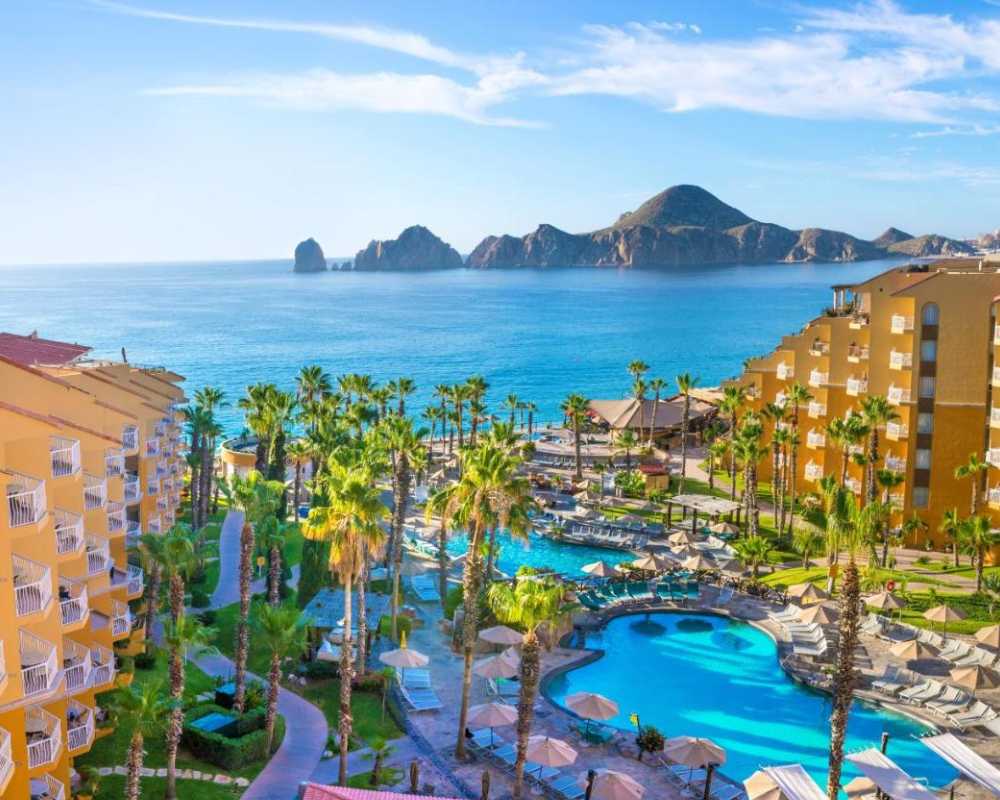

December in Mexico
December in Mexico ushers in the cool, dry season across the country, offering more pleasant and comfortable conditions for exploration. Northern regions see average temperatures of around 13°C (55°F), while in the south, including the Yucatán Peninsula, averages are around 24°C (75°F).
Mexico City, nestled in the highlands, experiences cooler weather with an average of 14°C (57°F). Coastal regions along the Pacific and Caribbean are warm and inviting, with averages of 27°C (81°F). December generally has clear skies and less rainfall, making it an excellent time for outdoor activities and sightseeing.
December can be more expensive to visit Mexico, particularly during the holiday season from mid-December to New Year. This period sees an increase in tourism, leading to higher prices for flights and accommodations, especially in popular beach resort areas. Early December is typically less crowded and more affordable.
December in Mexico is filled with festive cheer and traditional events. Las Posadas, a nine-day celebration leading up to Christmas, reenacts the journey of Mary and Joseph with processions, music, and food. The Festival of the Virgin of Guadalupe, one of Mexico’s most important religious holidays, takes place on December 12th with masses, processions, and fiestas.
Christmas is celebrated with family gatherings, traditional meals, and “pastorelas” (nativity plays). New Year’s Eve, or “Nochevieja,” is welcomed with fireworks, parties, and the custom of eating twelve grapes at midnight for good luck in the upcoming year.



